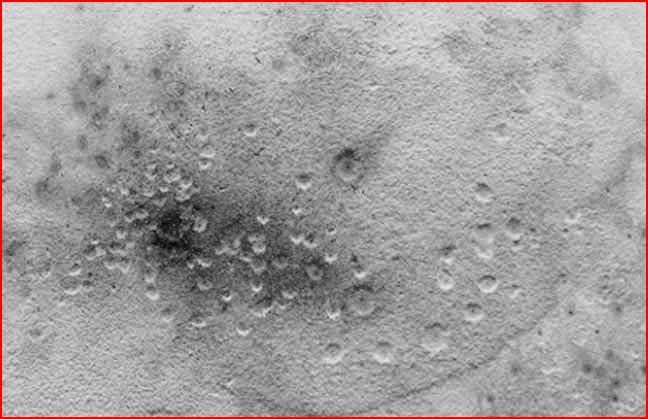|
|
||
 Photo Credit: Mel Acheson, C.J.Ransom |
||
|
pic of the day Links:
Society for
|
Jul 02, 2004
Planetary scientists have long assumed
that most craters in the solar system are due to impact. But laboratory
experiments reveal that electrical discharge can replicate observed
cratering patterns in surprising ways. But there is a third possibility, one that has now been explored in detail by advocates of the "electric universe." The craters in the photo above were made in a laboratory by electric discharge. This cratered surface duplicates many characteristics of planetary geology. The craters tend to clump according to size, to fall in lines and arcs. Notice also that the ground appears burnt or discolored where the discharge was strongest and the craters the densest-not unlike the surface of Mars and other rocky bodies in the solar system. The centers of some of the craters have bumps, as do many enigmatic craters on the Moon, Mars, and other surfaces. Also of interest are the dark streaks from two larger craters close to the center of the picture, a pattern similar to the "wind"-streaked craters found on Mars. This third possibility was first voiced in the 1960's. But astronomers have had little interest in such lines of investigation because they have long assumed that electric forces cannot reach across the vacuum of space. However, numerous space age findings have contradicted that belief. From the discovery of the Van Allen radiation belts in 1958 to the latest discoveries of galactic magnetic fields and x-ray galactic clusters, it has become increasingly clear that charged particles fill what once was called the "void" of space. Electrical activity is pervasive across both interplanetary and interstellar space. Is it possible that our solar system was once more active electrically than it is today? When electric sparks strike a solid surface, they can produce not only craters but many other common geological features as well. Experimental research on the electrical etching of rocky surfaces must therefore be a priority. According to the electrical theorists, most of the large-scale geological features in our solar system can only be generated by electric arcs. And if this is true, then the actual history of our solar system bears little or no resemblance to textbook descriptions. |
|
|
Copyright 2004: thunderbolts.info |
||
